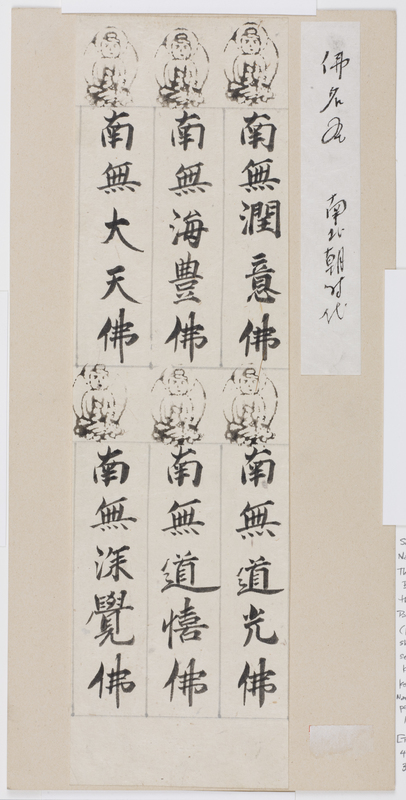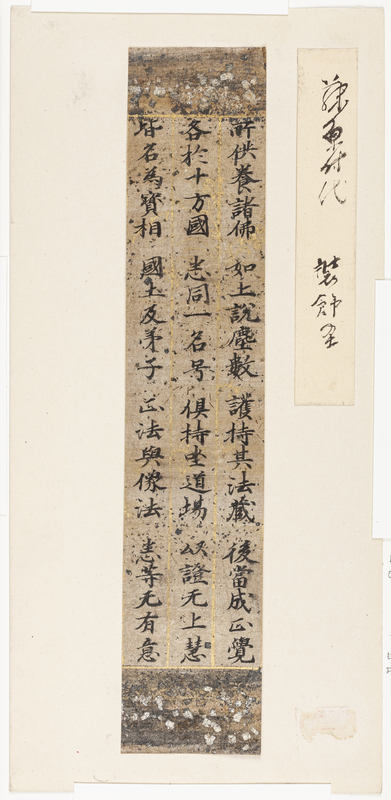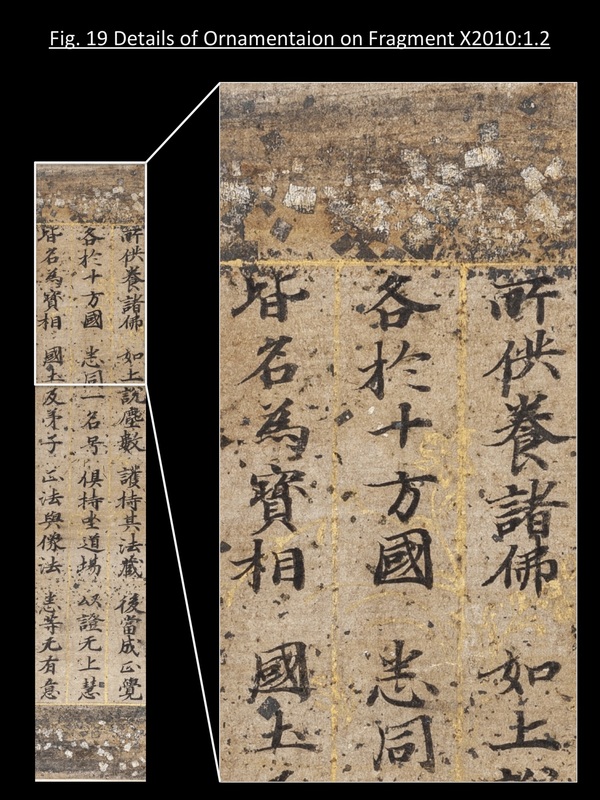Ornamenting Buddha’s Words: Sutra Copying and Paper Decoration
The JSMA set presents examples of paper decorations most common to sutra copying, including calligraphy done in gold and silver pigments on indigo-dyed paper (X2010:1.4 and 1.31), stamped images of small buddhas (X2010:1.6 and 1.8), and what is known as the “decorative sutra” or sōshokukyō 装飾経 with elaborate ornamentations done in cut gold and silver of different shapes and sizes, many over polychrome underdrawings (X2010:1.2).
As a scripture type, sutra recorded the words of the Buddha. As Buddhism matured and spread, there were many apocrypha composed centuries after the passing of its master. However, adhering to the narrative convention of sutras as the recording of the Buddha’s sermons, these apocryphal scriptures—even the ones believed to have been produced in China—invariably opened with the phrase, “Thus have I heard.” These texts were treated as the very words uttered by the Buddha just the same as the oldest sutras.
The words of the Buddha were understood to be the truth (dharma or hō 法 in Japanese) and a type of relic akin to or even superseding in importance the physical bodily remains of the master. For this reason, proliferating and disseminating sutras through reading, memorizing, chanting, and copying was believed to yield great spiritual merit. Furthermore, because the sutra—both as a text and amassing of individual characters—was perceived as the very body of the Buddha, it was often lushly ornamented with luxurious dyes and precious pigments including gold and silver.
Among the JSMA’s sutra fragments, by far the most elaborate is X2010:1.2 (Fig. 19, see image below). This relatively small piece of just three lines is from a twelfth-century copy of the Lotus Sutra. The calligraphy is done in black ink on paper ruled using gold pigment. The top and bottom margins are adorned with a wash of silver pigment with additional application of gold and silver leaves cut in varying shapes from sprinkled dust, short and thin strips, to small squares. Behind the calligraphy, one also finds faint traces of gold wash and speckles of silver dust and gold strips, along with underdrawings of flora done in gold pigment.1
A discussion of the stamped buddhas on Buddhist sutras—such as the one you see in X2010:1.8—can be found in the kyōgire “Scholar’s Picks."
1. For a concise but excellent introduction to Japanese paper decoration, see Miyeko Murase, “Flecks of Gold and Strips of Silver: Early Paper Decoration in Japan,” Orientations 33, no. 8 (2002): 36-44. ↩





